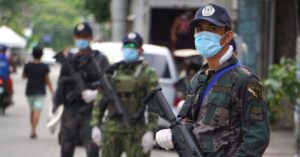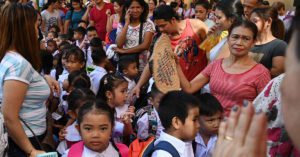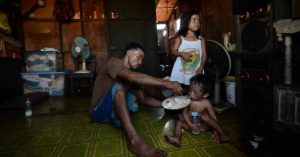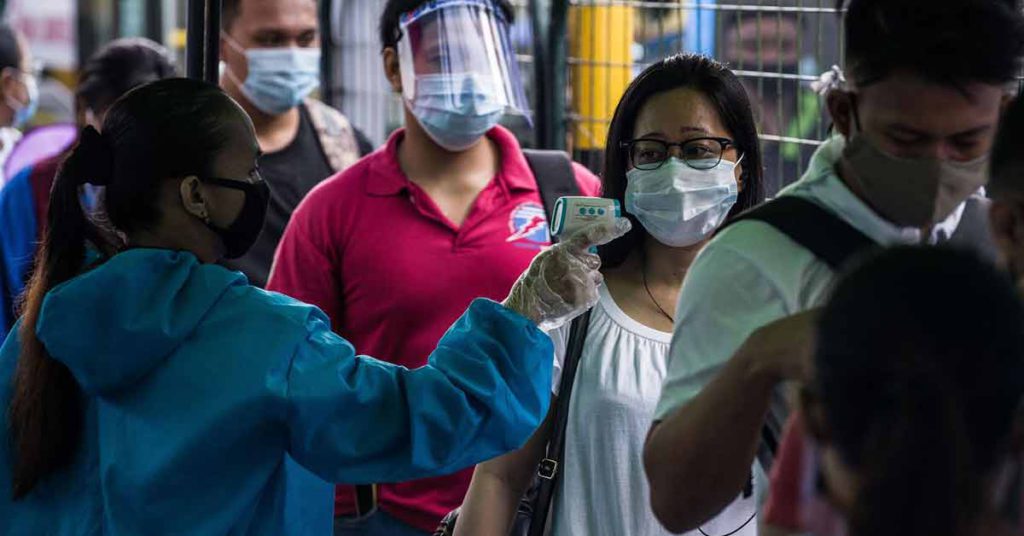
In the Southeast Asian region, the Philippines is one of the countries that has been affected the most by the COVID-19 pandemic. The country is estimated to lose between three percent and four percent of its gross domestic product (GDP) this year. In the first quarter of 2020, its GDP shrank by two-tenths of one percent for the first time in two decades according to Secretary Sonny Dominguez of the Department of Finance (DOF). However, given the rising number of positive COVID-19 cases in the country, it is most likely that the succeeding economic quarters will not be promising, as the Philippine economy tries to bounce back.
President Duterte in his address to the nation on 7 July said, “We have to be very circumspect in reopening the economy.” The president has a conservative stand on the reopening of the economy as he wants to avoid any possible overwhelming surge in the number of cases that might engulf the health care system of the country. Still, President Duterte’s utmost priority is to protect public health amid the pandemic while gradually opening the economy.
Socio-economic wise, the Philippines, like any other country that has been hit by the pandemic has suffered enormously. Due to almost a standstill of economic activities and taxpayer relief efforts because of the lockdowns, the government’s projected revenue collection is much lower compared to previous years. The DOF has projected that revenue collections will be 17 percent of GDP – lower than the collection in 2019. While disbursements for 2020 have been projected to be around 21.7 percent of GDP, 10 percent higher than the disbursements in 2019.
Such disbursements include COVID-19 initiatives that are continuously being implemented and delivered by various government agencies. Thus, the deficit for 2020 is projected to be around 8.1 percent of GDP or PHP1.56 trillion (US$31.5 billion). This is a very challenging economic forecast for the Philippines and something that Filipinos, in general, have to be mindful of.
Domestic consumption, which is the primary engine of the Philippine economy has been sternly affected by the pandemic. Sectors such as tourism, services, trade, retail, real estate, and manufacturing are experiencing difficulties. Around 7.3 million Filipinos have temporarily or permanently lost their jobs due to business closures because of the pandemic.
The Department of Labor and Employment (DOLE) has estimated that around 10 million workers may lose their jobs this year because of the pandemic. There’s also a huge loss on remittances given that thousands of Overseas Filipino Workers (OFWs) that have been temporarily or permanently retrenched in their host countries and are returning to the Philippines.
These are just some of the serious socio-economic impacts of the pandemic that are noticeable and if not mitigated and addressed could deepen further the inequities across socio-economic classes, affecting the most vulnerable sectors of society like women, children, the elderly, poor households, informal workers/labourers, ethnic minorities/indigenous groups and communities, and those in post-conflict regions like the Bangsamoro Autonomous Region in Muslim Mindanao (BARMM).
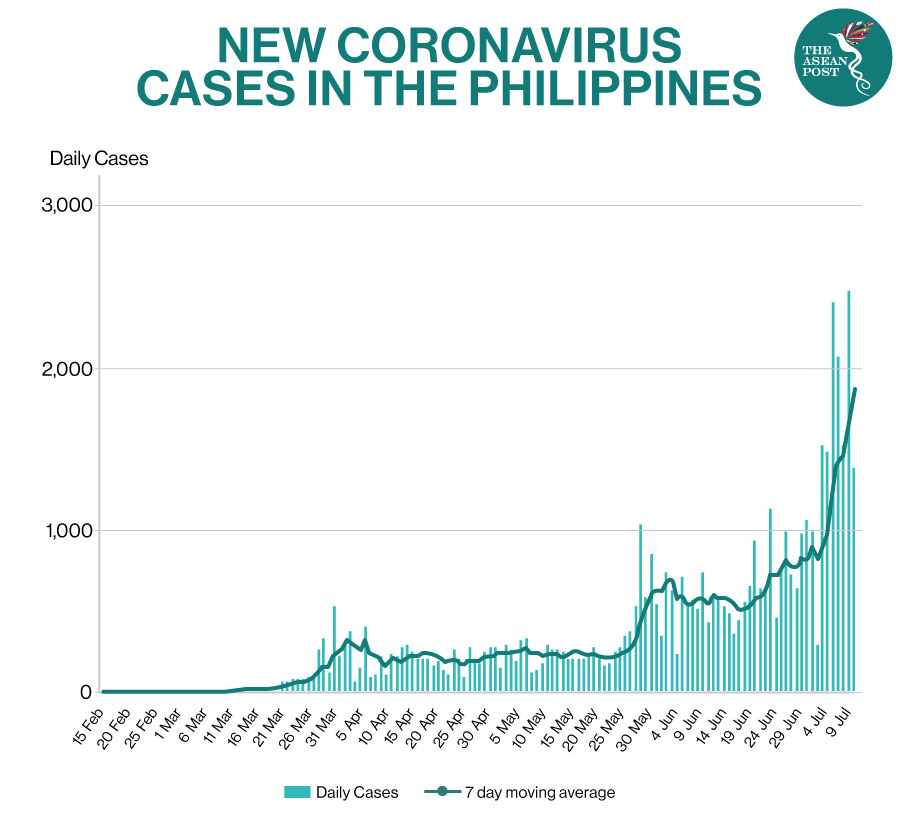
Social Amelioration Program
In response to the COVID-19 pandemic, the Philippine government is pursuing a four-pillar strategy to safeguard Filipinos from its impacts. These are:
Pillar 1: Emergency support for vulnerable groups and individuals amounting to PHP595.6 billion (US$12 billion), which is PHP5.6 billion (US$113 million) higher than what was reported previously due to the inclusion of additional DOLE and Department of Agriculture (DA) programs, and an Asian Development Bank (ADB) grant for rapid emergency supplies.
Pillar 2: Expanded medical resources to fight COVID-19 with an increased budget amounting to PHP58.6 billion (US$1.1 billion), which is PHP80.6 billion (US$1.6 billion) higher than the one previously reported due to the updated value of World Bank financing for COVID-19 response programs. This pillar aims to ensure the safety of front-liners through health insurance coverage for all COVID-19 patients, special risk allowance, hazard pay, provision of medical-grade personal protective equipment (PPE) for frontline health workers, increased testing capacity, the expansion of the targeted testing program, etc.
Pillar 3: Fiscal and monetary actions to finance emergency initiatives and keep the economy afloat with an increased budget amounting to PHP1.1 trillion (US$22.2 billion), which is PHP246.3 billion (US$4.9 billion) higher than the previous version, primarily due to an increase in projected official development assistance (ODA) financing from multilateral and bilateral sources worth PHP126.9 billion (US$2.5 billion) and the inclusion of global bonds sold by the Bureau of Treasury worth PHP119.4 billion (US$2.4 billion).
Pillar 4: An economic recovery plan to create jobs and sustain growth, which will be funded by pillar 3.
The Social Amelioration Program (SAP) is under the first pillar of providing emergency support or lifeline assistance to vulnerable groups. It is thus far the most comprehensive and largest social protection program in the history of the Philippines amounting to around PHP205 billion (US$4.1 billion) to support 18 million low-income households for the first tranche of the SAP distribution and to reach around 23 million low-income families in total, as it started the second wave of distribution of cash subsidies as directed by President Duterte.
Hence, an additional five million low-income household beneficiaries have been added to the existing list of SAP beneficiaries to pave way for the inclusion of all eligible but waitlisted/left-out household beneficiaries from the first wave of the SAP distribution.
The SAP is anchored upon the “Bayanihan To Heal As One-Act Law”, which was signed by President Duterte on 25 March, 2020. Under the SAP, beneficiaries will get emergency subsidies worth between PHP 5,000 (US$101) and PHP 8,000 (US$161). Likewise, Public Utility Vehicle (PUV) drivers whose operations were suspended due to the spread of COVID-19 were also added as beneficiaries of the SAP under the Department of Social Welfare and Development (DSWD).
Challenges And Successes
While the delivery of SAP under the DSWD was relatively successful, it also encountered problems and challenges along the way. As of 9 July 2020, the amount of cash directly released under the government’s conditional cash transfer or Pantawid Pamilya Pilipino Program (4Ps) which provides conditional cash grants to the poorest of the poor in the Philippines amounted to PHP18.3 billion (US$369 million). The number of 4Ps beneficiaries was 4,219,182, while the number of non-4Ps beneficiaries was 13,290,019.
As of 2 July, PHP785 million (US$15.8 million) has been distributed to 98,132 Transport Network Vehicle Service (TNVS) and PUV drivers in the National Capital Region (NCR). Likewise, the ongoing deduplication process by the DSWD has resulted in more than 48,000 families receiving assistance more than once with 13,000 voluntarily returning the duplicate cash aid.
The first tranche of SAP distribution was swamped by controversies, complaints of anomalies, problems, and challenges, which included (1) the problem of identification, validation, and reconciliation of the lists of beneficiaries between that of the DSWD and local government units (LGUs); (2) logistical challenges of reaching remote communities; (3) continuous requests from LGUs to include or specify a number of sectors in the list of beneficiaries; (4) continuous requests from LGUs to increase the number of beneficiaries in a sector, and to download additional funds for families who are not on existing lists; (5) threats, harassments, and insults received by the DSWD and LGU personnel; (6) exposure of a number of DSWD and LGU personnel to individuals who are COVID-19 positive; (7) postponement of pay-outs due to the increasing number of infected individuals in the community; and (8) complaints about barangay (village) officials who were playing favourites with their relatives and supporters in the distribution of SAP.
Given these irregularities and anomalies in the first wave of SAP distribution, President Duterte called on the Department of Interior and Local Government (DILG) to immediately investigate any reported anomalies concerning SAP distribution by erring local officials and placed a cash reward of PHP30,000 (US$606) to any person who can provide information leading to the arrest of local officials involved in the misappropriation of funds intended for SAP beneficiaries.
According to DILG Secretary Eduardo Año, there are around 886 local government officials who are facing various criminal and administrative charges due to their alleged violations in the distribution of cash aid under the SAP. Out of these, 364 are elected and the rest are appointed, while 182 barangay officials are facing administrative cases.
These anomalies only show that even amid a pandemic, corruption among those in power, in this case, some local government officials, taking advantage of the crisis to enrich themselves, is still a prevailing problem. It’s good to note that the government has not ignored these anomalies and corrupt practices. This is important to ensure accountability and to guarantee that aid deployed benefits those who need it the most.
Consequently, because of the many challenges in the distribution of the first tranche of the SAP, the DSWD has now opted to deliver the cash subsidy via digital electronic disbursement which is faster and more reliable while complying with the existing health and safety protocols. The digital distribution of the SAP has already started in four NCR cities – Quezon City, Caloocan, Makati, and Pasig. As of 3 July, the DSWD has made SAP subsidy pay-outs amounting to PHP7 billion (US$141.4 million) to over 1.38 million families.
There are 11 areas covered by SAP 2 and these include; Region III, except Aurora province, NCR; Calabarzon; Benguet; Pangasinan; Iloilo; Cebu Province; Bacolod City; Davao City, Albay Province, and Zamboanga City. Likewise, the DSWD has also served the “waitlisted” beneficiaries in Cordillera Administrative Region (CAR); Region I (Ilocos); Region III (Central Luzon); Region IV-A (Calabarzon); Region V (Bicol); and Region VII (Central Visayas).
To date, a total of PHP64.3 million (US$1.3 million) has been distributed to waitlisted families in geographically isolated disadvantaged areas (GIDAs) in the Cordillera Autonomous Region (CAR), and Regions 1 and 3.
Though the implementation of SAP 2 has taken a while, it is still a helpful and welcome development that will benefit the neediest Filipinos in the country.
Source: The ASEAN Post
https://theaseanpost.com/article/covid-19-impacts-philippines

